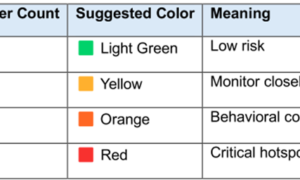In today’s dynamic business environment, effective treasury management has never been more critical. With rising complexities in cash flow, evolving regulatory standards, and increased scrutiny on financial risk, treasury teams are under immense pressure to manage assets and liabilities efficiently. Treasury management not only optimizes cash flow but also mitigates financial risk, ensuring that companies have the liquidity required to meet operational demands.
In this blog, we will shed light on some best practices that treasury teams can leverage to enhance efficiency, and drive informed decision-making.
Understanding Treasury Management
Treasury management is the oversight and control of an organization’s financial assets, liabilities, and risk exposure. Its primary goals include optimizing liquidity, managing cash flow, and ensuring that the company has sufficient resources to meet short-term and long-term obligations.
Key Components of Treasury Management
Treasury management typically involves the following key components:
- Cash Management: Efficient handling of inflows and outflows to maintain liquidity.
- Risk Management: Identifying and mitigating risks associated with currency fluctuations, interest rate changes, and credit exposures.
- Investment Management: Strategically investing surplus cash to yield returns without compromising liquidity.
- Funding and Debt Management: Ensuring optimal financing and debt levels to support growth initiatives.
- Compliance: Adhering to financial regulations to avoid penalties and maintain a good market reputation.
Now that we understand the primary goals, let’s look at best practices for achieving effective treasury management.
1. Leverage Treasury Risk Management Software
Using dedicated treasury management software is a game-changer for companies seeking to streamline operations. Treasury software integrates with existing enterprise systems, consolidating financial data across departments and automating many manual processes.
This helps companies gain real-time visibility into cash flows, reduce human error, and enhance forecasting accuracy. Advanced tools often offer predictive analytics, scenario planning, and automated workflows, allowing treasury teams to focus on high-value tasks rather than data entry.
2. Implement Real-Time Cash Forecasting
Accurate cash flow forecasting is essential for effective treasury management. Real-time forecasting uses up-to-the-minute data to predict future cash needs, helping companies avoid shortfalls and make proactive decisions. By leveraging advanced forecasting tools, treasury teams can assess various “what-if” scenarios. This insight allows them to anticipate cash requirements and take action to mitigate any potential risks.
Implementing cash flow forecasting software with predictive capabilities can also provide a clearer picture of financial health, empowering treasury teams to act swiftly during market changes. Forecasting allows companies to shift from a reactive to a proactive stance, enhancing stability and preparedness.
3. Enhance Risk Management with Predictive Analytics
Risk management is a core function of treasury management. Utilizing predictive analytics within treasury risk management software can offer insights into possible financial risks, such as credit defaults, forex volatility, or interest rate fluctuations. Predictive analytics enable treasury teams to model different risk scenarios and determine appropriate mitigation strategies.
4. Maintain a Liquidity Buffer
A liquidity buffer provides a safety net for companies to manage unexpected expenses or economic downturns without disrupting operations. This buffer may consist of easily accessible cash reserves or unused credit lines. By maintaining a liquidity buffer, companies can ensure they have the resources to cover unforeseen costs, such as urgent capital expenditures or regulatory compliance requirements.
A best practice in treasury management is to establish guidelines for liquidity, setting clear thresholds based on the organization’s risk tolerance and cash flow needs. This enables treasury teams to maintain a healthy balance between liquidity and investment returns, optimizing both security and profitability.
5. Strengthen Internal Collaboration
Effective treasury management requires seamless collaboration across departments. Finance, sales, operations, and procurement must all work together to provide the treasury with relevant data and insights. When treasury teams have visibility into upcoming projects, expected expenses, and revenue forecasts, they can make more accurate cash flow projections and allocate resources effectively.
6. Ensure Regulatory Compliance
Compliance is an integral part of treasury management, especially as regulatory standards evolve. Treasury teams must stay informed of industry regulations, such as anti-money laundering (AML) policies, know-your-customer (KYC) requirements, and data protection laws. Failure to comply with these regulations can lead to costly fines, reputational damage, and disruptions in operations.
One effective strategy is to use treasury management software that includes compliance monitoring features. Such software can automatically track regulatory updates, flag any non-compliant transactions, and generate audit trails to simplify reporting. Staying compliant not only protects the company but also enhances trust with customers and stakeholders.
7. Regularly Review and Update Policies
Financial markets are constantly evolving, and so are the needs of businesses. Treasury teams should regularly review and update treasury policies to ensure they align with the organization’s goals and current market conditions. This includes reviewing cash reserves, assessing risk tolerance, and refining investment strategies.
Periodic reviews also allow treasury teams to integrate new technologies or adopt innovative practices, such as incorporating AI-driven cash forecasting tools or blockchain-based transaction tracking. Staying current helps the organization remain agile, maximizing returns while minimizing potential risks.
Summing Up
Effective treasury management is vital to a company’s financial resilience, enabling businesses to optimize cash flow, manage risks, and support growth. By implementing best practices—such as leveraging treasury management software, adopting real-time forecasting, enhancing risk management, and maintaining a liquidity buffer—treasury teams can strengthen their organization’s financial health and navigate today’s complex economic landscape. Furthermore, fostering internal collaboration and ensuring regulatory compliance adds layers of stability and foresight, creating a comprehensive treasury management approach.
By following these practices, organizations can build a robust treasury function that not only supports day-to-day operations but also drives long-term financial success. In an era where financial agility is crucial, effective treasury management offers companies a strategic advantage, helping them make informed decisions with confidence.

































